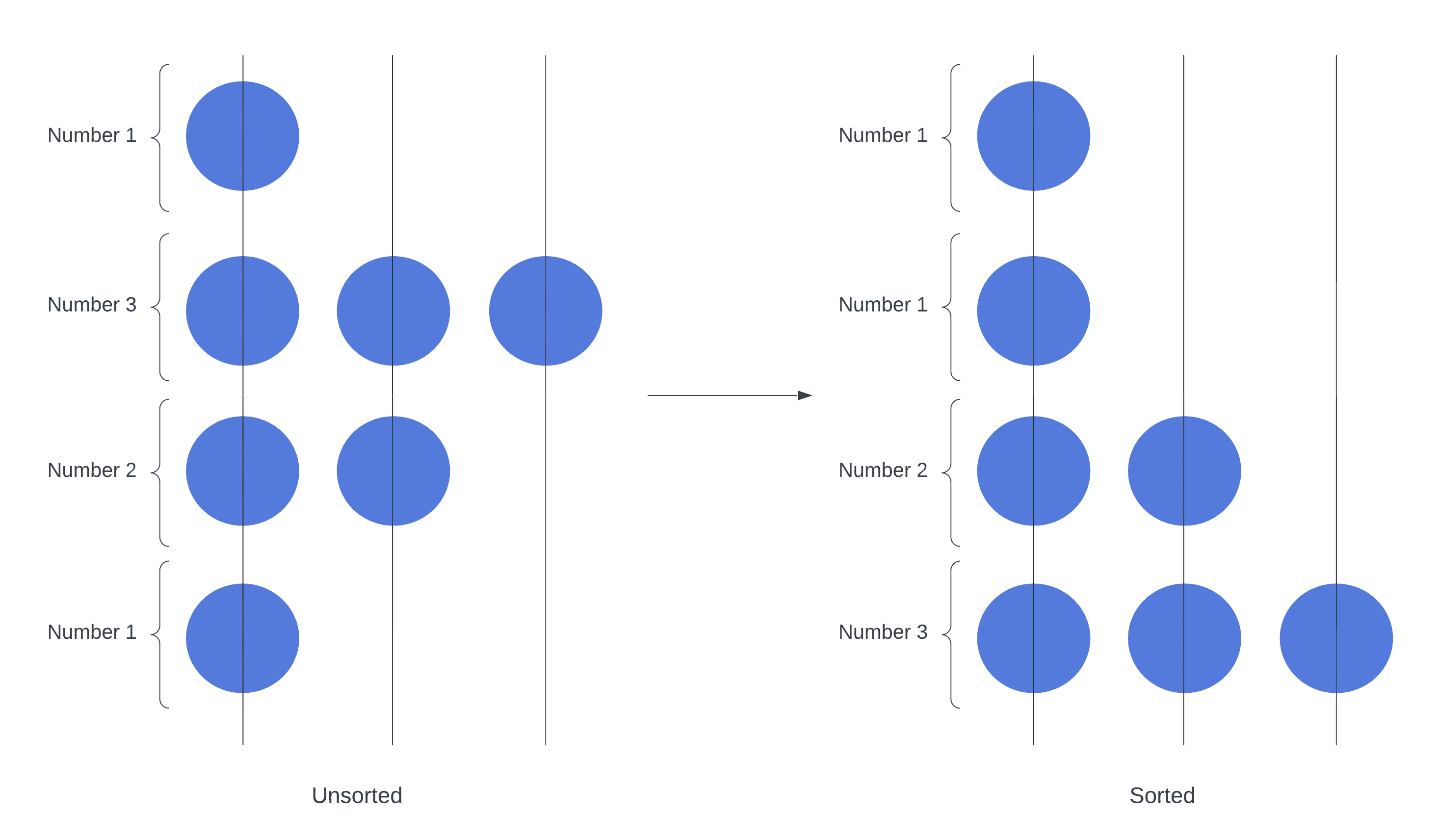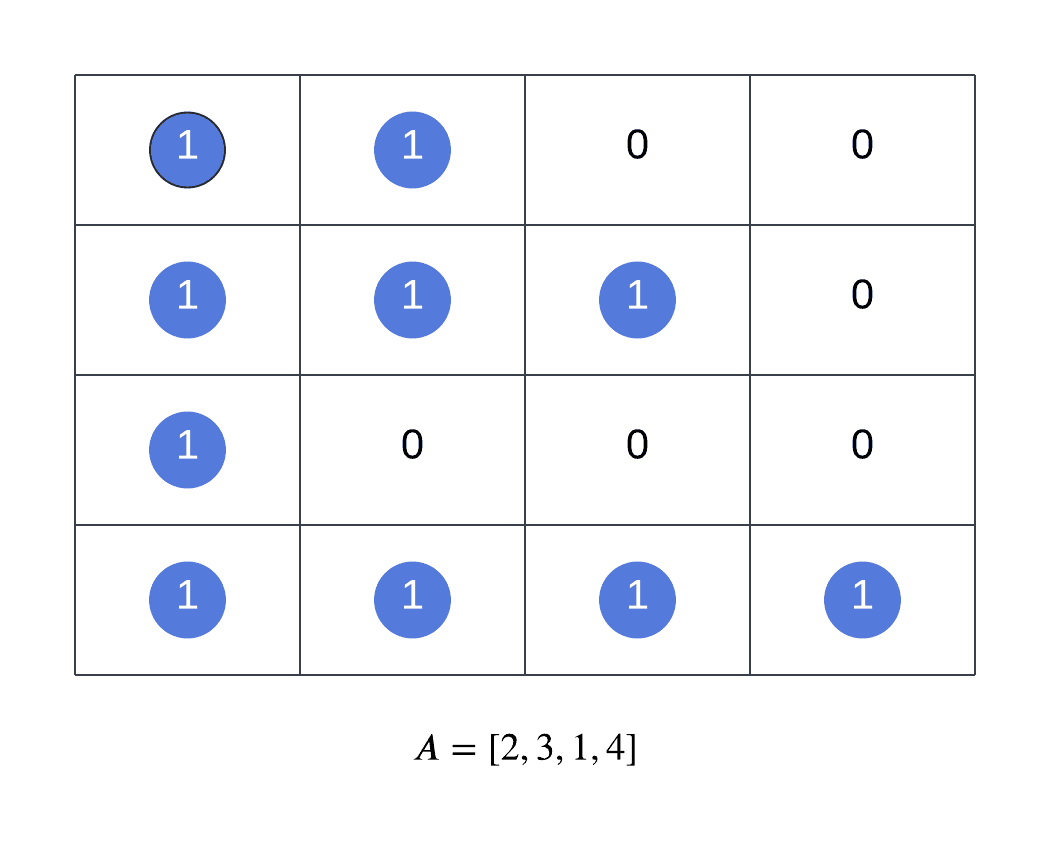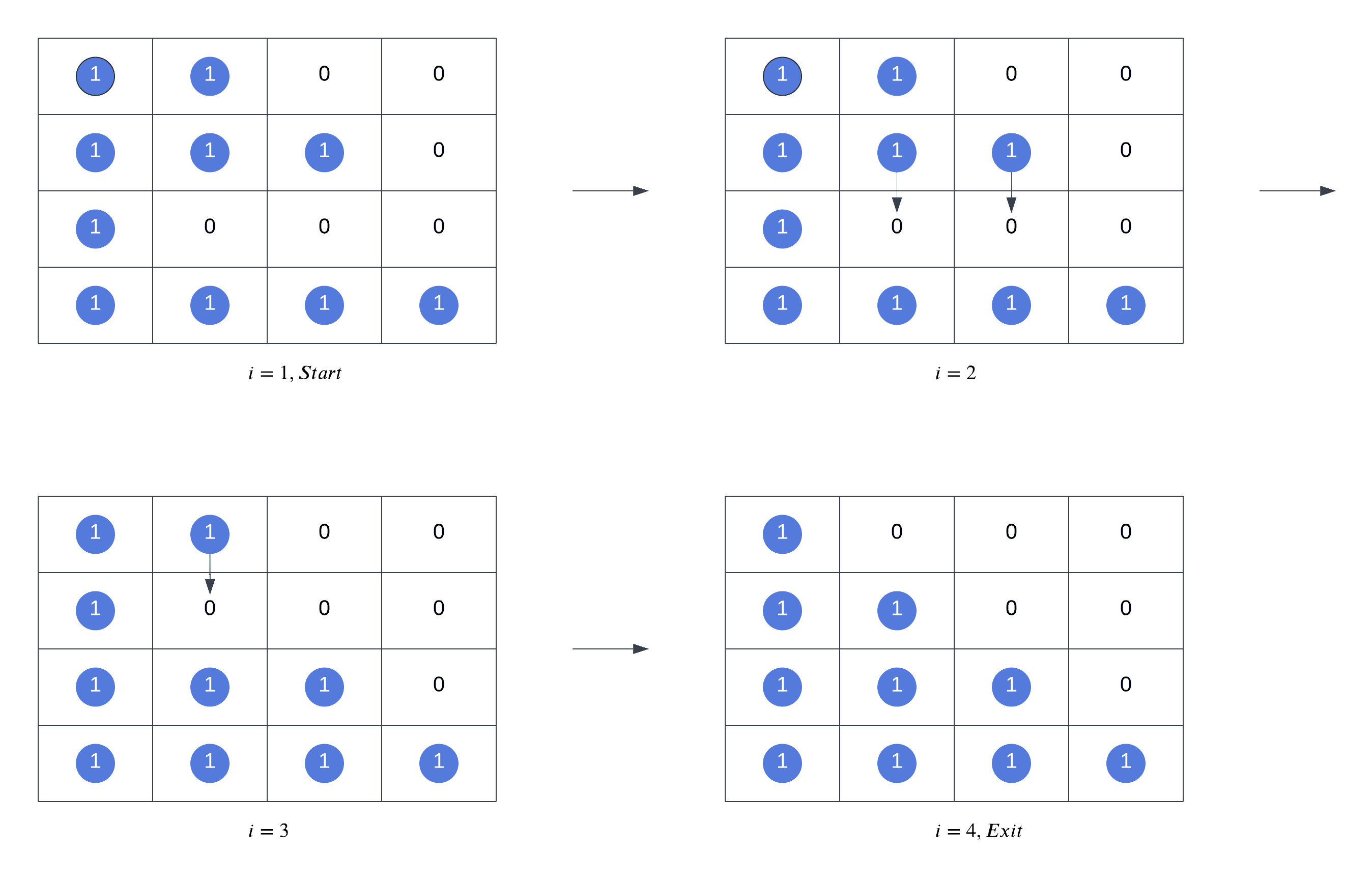1. 引言
在本教程中,我们将学习一种名为 Gravity Sort(重力排序) 的自然排序算法,也被称为 Bead Sort(珠排序)。
我们在日常开发中使用各种排序算法来对数据进行有序排列。而 Gravity Sort 是一种受自然现象启发的排序算法 —— 它的灵感来源于重力作用。这种算法虽然在软件实现中效率不高,但它展示了我们如何从自然界中汲取灵感,设计出独特的算法模型。
2. Gravity Sort 原理
Gravity Sort 由 Joshua J. Arulanandham、Cristian S. Calude 和 Michael J. Dinneen 于 2002 年提出。它最初的设计灵感来源于珠算(abacus)上珠子在重力作用下的自然排列现象。
算法的核心思想是:将一组正整数表示为珠子在竖直杆上的分布,然后模拟重力作用让珠子自然下落,最终形成一个有序序列。
举个例子:
- 数字 3 表示为 3 根杆上各有一个珠子;
- 数字 2 表示为 2 根杆上各有一个珠子。
当重力作用后,所有珠子会落到各自杆的最底部,从而形成一个升序排列的结果。

在更复杂的情况下,例如输入为 [1, 3, 2, 1],模拟重力后,珠子的排列会变成 [1, 1, 2, 3],如下图所示:

3. 算法实现模型
为了在软件中模拟珠子下落的过程,我们使用一个二维矩阵来模拟“珠算”系统:
- 每一列代表一根杆;
- 每一行代表一个层级;
- 矩阵中的每个元素表示该位置是否有珠子(1 表示有,0 表示无)。
给定一个正整数数组 A,其中最大值为 m,数组长度为 n,那么我们需要一个 n 行 m 列的矩阵来表示这些珠子。
初始化矩阵后,我们模拟每一行的珠子依次下落,直到所有珠子都稳定在底部,形成一个有序排列。


在模拟过程中,i 从 1 开始递增,直到 i=4 时,整个矩阵稳定,珠子排列完成。
4. 伪代码
以下是 Gravity Sort 的伪代码实现:
algorithm GravitySort(A, n, m):
// INPUT
// A = the input list of n positive integers
// n = the number of elements in A
// m = the largest number in A
// OUTPUT
// A is sorted in ascending order
// Initialize matrix based on input A
T <- an n x m matrix
for i <- 1 to n:
for j <- m - 1 to 0:
x <- i
// x is the current level of the falling bead
if T[x, j] has a bead:
while x > 0 and T[x - 1, j] is empty:
T[x, j] <- 0
T[x - 1, j] <- 1
x <- x - 1
5. 时间与空间复杂度分析
5.1 时间复杂度
Gravity Sort 在软件实现中效率并不高:
- 单线程实现:需要遍历整个矩阵,每次珠子下落最多需要移动 n 层。因此整体时间复杂度为 **O(n × n × m)**。
- 多线程或硬件实现:可以并行处理每一列的珠子下落,理论上可以达到 O(n) 的线性时间复杂度。但这种实现方式更适合硬件而非软件。
5.2 空间复杂度
- 空间复杂度为 **O(n × m)**,因为我们需要一个 n 行 m 列的矩阵来存储珠子的状态。
- 每个矩阵单元格只需要一个 bit 来表示是否有珠子(1 或 0),从而尽量减少内存占用。
6. 总结与思考
Gravity Sort 是一种受自然现象启发的排序算法。虽然在软件中效率不高,但它的模型非常直观,适合教学和算法思维的启发。
以下是关键点总结:
✅ 优点:
- 直观易懂,基于物理现象;
- 可以并行化实现,适合硬件应用。
❌ 缺点:
- 单线程实现效率低;
- 空间占用大,依赖最大数值大小;
- 仅适用于正整数。
⚠️ 踩坑提醒:
- 如果输入中包含非正整数(如 0 或负数),需要额外处理或转换;
- 实现时注意二维数组的初始化和模拟下落逻辑,容易出错。
Gravity Sort 展示了我们如何从自然界中汲取灵感,设计出独特的算法模型。虽然它在实际开发中不常用,但其思想值得我们深入思考和借鉴。